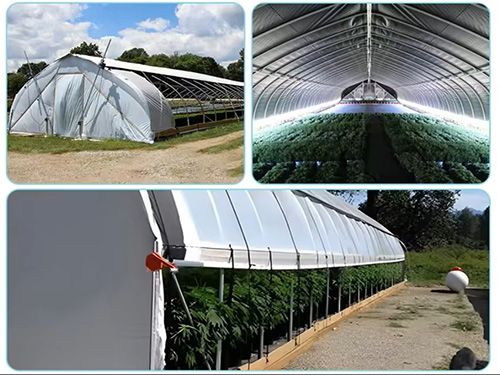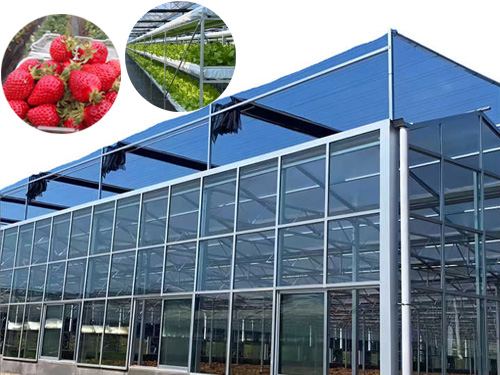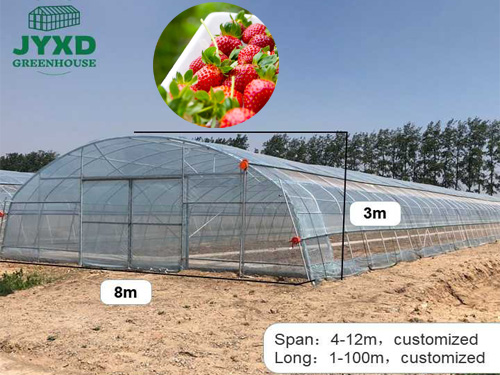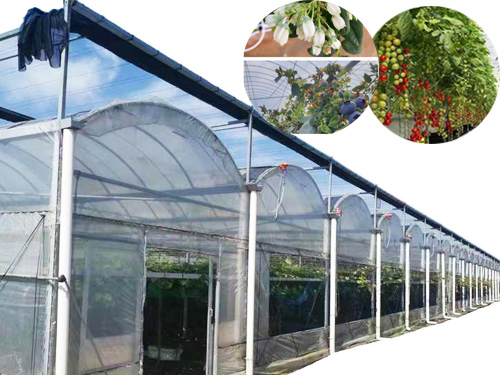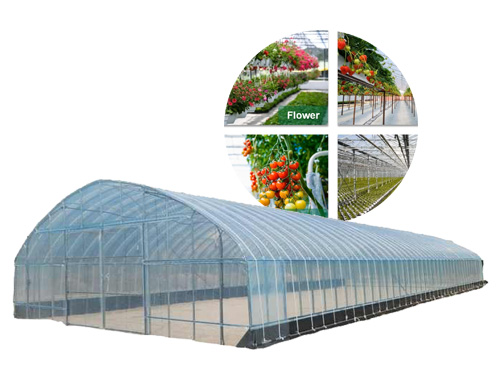NEWS DETAILS
NEWS INFORMATION
Sustainable Greenhouse Architecture: Solar Panel Integration & Rainwater Harvesting Systems
AUTHOR:jyxd-greenhouse DATE:2025-04-04 16:23:40 HITS:70
As the world moves toward more sustainable practices, greenhouse architecture is evolving to incorporate eco-friendly solutions like solar panel integration and rainwater harvesting systems. These innovations not only reduce environmental impact but also lower operational costs and enhance productivity. This article explores how sustainable greenhouse architecture, powered by solar energy and efficient water management, can transform modern agriculture.
Why Sustainable Greenhouse Architecture Matters
Traditional greenhouse operations often rely on non-renewable energy sources and excessive water use, contributing to environmental degradation. Sustainable greenhouse architecture addresses these challenges by:
· Reducing Carbon Footprint: Minimizing reliance on fossil fuels.
· Conserving Water: Efficiently managing water resources.
· Lowering Costs: Decreasing energy and water expenses.
· Enhancing Resilience: Building systems that adapt to climate change.
1. Solar Panel Integration for Energy Efficiency
Solar panels are a cornerstone of sustainable greenhouse architecture, providing a clean and renewable energy source to power operations.
Benefits of Solar Panel Integration:
· Energy Independence: Reduce reliance on grid electricity and fossil fuels.
· Cost Savings: Lower energy bills over time, despite the initial investment.
· Environmental Impact: Decrease greenhouse gas emissions.
· Versatility: Solar panels can power lighting, heating, cooling, and irrigation systems.
Design Considerations:
· Orientation: Position the greenhouse to maximize sunlight exposure for both plants and panels.
· Panel Placement: Install panels on the roof, adjacent structures, or ground-mounted systems to avoid shading crops.
· Energy Storage: Use batteries to store excess energy for use during cloudy days or at night.
· Efficiency: Choose high-efficiency panels to maximize energy output in limited space.
2. Rainwater Harvesting Systems for Water Conservation
Rainwater harvesting is a sustainable solution for managing water resources in greenhouses. By collecting and storing rainwater, growers can reduce reliance on municipal water supplies and minimize runoff.
Benefits of Rainwater Harvesting:
· Water Savings: Reduce water bills and conserve freshwater resources.
· Improved Water Quality: Rainwater is free of chemicals like chlorine, making it ideal for irrigation.
· Flood Prevention: Capture runoff to reduce the risk of flooding and soil erosion.
· Sustainability: Promote eco-friendly water management practices.
Components of a Rainwater Harvesting System:
· Collection Surface: Use the greenhouse roof or adjacent structures to collect rainwater.
· Gutters and Downspouts: Direct water from the roof to storage tanks.
· Storage Tanks: Install tanks to store collected water; choose materials like polyethylene or concrete.
· Filtration System: Remove debris and contaminants before water enters the storage tank.
· Distribution System: Use pumps or gravity-fed systems to distribute water for irrigation.
3. Combining Solar Panels and Rainwater Harvesting
Integrating solar panels and rainwater harvesting systems creates a synergistic effect, enhancing the sustainability and efficiency of greenhouse operations.
Synergistic Benefits:
· Energy for Water Pumps: Solar panels can power pumps for rainwater distribution, reducing energy costs.
· Optimized Space: Use the greenhouse roof for both solar panels and rainwater collection.
· Resilience: Create a self-sustaining system that operates independently of external resources.
Design Tips:
· Dual-Purpose Roof: Design the roof to accommodate both solar panels and rainwater collection.
· Efficient Layout: Ensure panels and gutters are positioned to maximize energy and water capture.
· Scalability: Plan for future expansion of both systems as your greenhouse grows.
4. Case Studies: Sustainable Greenhouses in Action
Solar-Powered Greenhouse in California:
· Challenge: High energy costs and frequent droughts.
· Solution: Integrated solar panels and rainwater harvesting reduced energy bills by 60% and water usage by 50%.
Rainwater-Fed Greenhouse in India:
· Challenge: Limited access to freshwater.
· Solution: A rainwater harvesting system provided 80% of the greenhouse’s irrigation needs, ensuring year-round production.
Hybrid Greenhouse in the Netherlands:
· Challenge: High energy consumption and water waste.
· Solution: Combined solar panels and rainwater harvesting created a fully sustainable operation, cutting costs and emissions.
5. Benefits of Sustainable Greenhouse Architecture
Implementing solar panel integration and rainwater harvesting systems offers numerous advantages:
· Environmental Sustainability: Reduce carbon emissions and conserve water.
· Cost Efficiency: Lower energy and water expenses over time.
· Increased Resilience: Build systems that adapt to climate change and resource scarcity.
· Enhanced Reputation: Appeal to eco-conscious consumers and markets.
6. Best Practices for Sustainable Greenhouse Design
To maximize the benefits of sustainable greenhouse architecture, follow these best practices:
· Conduct a Site Analysis: Assess sunlight, rainfall, and space availability before designing.
· Invest in Quality Components: Choose durable and efficient solar panels, tanks, and filtration systems.
· Monitor and Maintain: Regularly inspect and maintain systems to ensure optimal performance.
· Educate Staff: Train employees on sustainable practices and system operations.
· Seek Certifications: Obtain certifications like LEED or USDA Organic to validate your sustainability efforts.
Conclusion
Sustainable greenhouse architecture, powered by solar panel integration and rainwater harvesting systems, is a game-changer for modern agriculture. By reducing environmental impact, lowering costs, and enhancing resilience, these innovations pave the way for a greener and more profitable future. Whether you’re a small-scale grower or a commercial operation, adopting sustainable practices will help you stay ahead in a rapidly changing world.
For more expert tips and high-quality greenhouse solutions, visit our website and take your cultivation practices to the next level. Let’s grow smarter and cultivate a greener future together!
![]()
Meta Description: Discover how sustainable greenhouse architecture with solar panel integration and rainwater harvesting systems can reduce costs, conserve resources, and enhance productivity.
Hebei Juyou Xinda Greenhouse Facilities Co.,Ltd.
Copyright © 2024-2025 https://www.jyxd-greenhouse.com. All Rights Reserved Hebei Juyou Xinda Greenhouse Facilities Co.,Ltd.Copyright





 Current Location:
Current Location:


